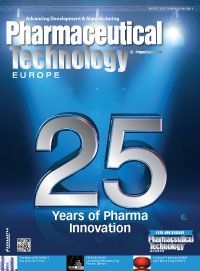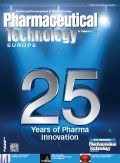Single-Use: Game-Changing Technology for the Biopharmaceutical Industry
Pharmaceutical Technology Europe
The success of new biopharmaceutical drugs also relies on innovative solutions such as single-use technologies that suppliers have to offer to the pharmaceutical industry.

Single-Use Technology—From Evolution to Revolution
Single-use technologies continue to evolve rapidly as more biopharmaceutical companies embrace the concept and start implementing single-use systems in their bioprocesses.
The technical and economic benefits of single-use technologies are well known and the biotechnology industry is broadening its adoption into all bioprocess steps in cell culture, downstream processing and final fill and finish. Although the idea of single use is not new and has become standard practice for filter capsules and storage bags, modern single-use processes are more complex and comprise an integrated production concept in new facilities or the replacement of stainless steel in existing ones. Single-use bioreactors, for example, didn’t exist 20 years ago, and the technology has gone from evolution to revolution in less than two decades.
The growing usage of single-use bags in all crucial process steps of commercial production of biological drugs drives the need for improved quality, robustness and assurance of supply, more robust change control and more robust business continuity. To meet these challenges, single-use suppliers need to partner with resin and film suppliers, establish the full control of their process from the resin to the final product and build production capacity with redundant equipment in multiple locations.

Pharmaceutical Technology Europe25th Anniversary Issue
For biopharmaceutical manufacturers, capacity adaptation is crucial. If demand suddenly increases and the required product cannot be made in the right quantities, a company is not just facing a loss of short-term sales, but long-term market share as well. Another challenge is technology transfer in biopharmaceutical manufacturing is often moved several thousand miles away. The future is about “smart process transfer” and thinking carefully about what technologies are put into the pilot plant. It can have a huge impact on process transfers later on.
With the number of biotech drugs in clinical trials expected to increase, companies will need to efficiently manage product changeovers and reliably obtain materials from trustworthy sources. This is a challenge for the supplier as well.
Single use demands greater levels of commitment as manufacturers increasingly depend on their technology providers: a completely different assurance of supply concept is essential.
In Asia, some of the first single-use facilities are already operating, but this is just the beginning. To further secure the future implementation of single-use processing, an international supplier must ensure the consistent quality of materials, fully understand and control the production process, and guarantee a sustainable product supply chain for many years.
It’s a great time to look back at the successful implementation of single-use technologies and, at the same time, look forward to new challenges and new solutions. The success of new biopharmaceutical drugs also relies on innovative solutions that suppliers have to offer to the pharmaceutical industry.

About the Author
Stefan Schlack, Sartorius Stedim Biotech

Pharmaceutical Tariffs Are Imminent: How Industry is Bracing for Impact
April 16th 2025On April 14, 2025, the Trump Administration launched a national security-driven investigation into pharmaceuticals, a move that will likely result in tariffs being placed on pharmaceutical drugs, ingredients, and other components that are imported from outside of the United States.
Drug Solutions Podcast: A Closer Look at mRNA in Oncology and Vaccines
April 30th 2024In this episode fo the Drug Solutions Podcast, etherna’s vice-president of Technology and Innovation, Stefaan De Koker, discusses the merits and challenges of using mRNA as the foundation for therapeutics in oncology as well as for vaccines.